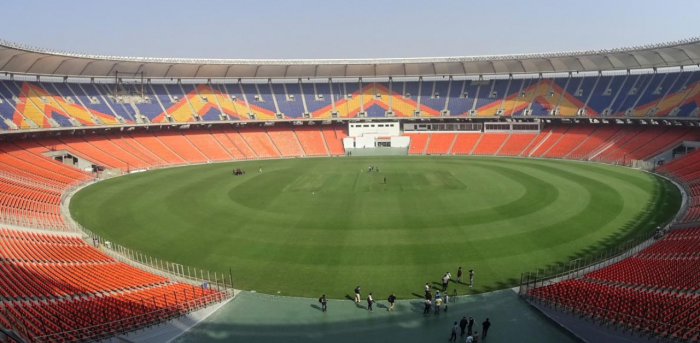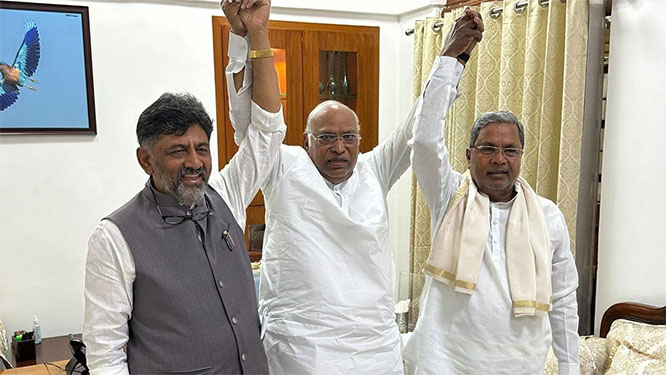
Ahmedabad, Feb 24: The refurbished Sardar Patel stadium in Ahmedabad has been renamed as Narendra Modi Stadium on Wednesday.
President Ram Nath Kovind inaugurated the world's largest cricket stadium at Motera in Ahmedabad.
Gujarat: President Ram Nath Kovind inaugurates Narendra Modi Stadium, the world's largest cricket stadium, at Motera in Ahmedabad
Union Home Minister Amit Shah, Gujarat Governor Acharya Devvrat, Sports Minister Kiren Rijiju, and BCCI Secretary Jay Shah also present pic.twitter.com/PtHWjrIeeH
— ANI (@ANI) February 24, 2021
Refurbished Sardar Patel stadium in Ahmedabad renamed after PM as Narendra Modi stadium
— Press Trust of India (@PTI_News) February 24, 2021
The 1,10,000 capacity stadium is set to host its first international match -- the Day/Night pink ball Test between India and England from February 24.
Speaking about the new stadium, India number three Cheteshwar Pujara said, "It's an amazing feeling, it's a huge, huge stadium and we all are looking forward to playing our first pink ball Test at Motera."
"The world's largest cricket stadium will also have 11 centre strips, which is also unique along with never before heard four dressing rooms with in-built gymnasium," said Gujarat Cricket Association's joint secretary Anil Patel.
The stadium had undergone extensive renovation which started when current BCCI secretary Jay Shah was in charge of the state cricket unit.
The stadium, spread in an area of 63 acres, also has 6 indoor pitches with bowling machines. This is in addition to the outdoor practice pitches and two practice grounds with a small pavilion area
A momentous day for Indian cricket. Addressing the inaugural ceremony of world’s largest cricket stadium in Ahmedabad. Watch live! https://t.co/1fzFHwnkNR
— Amit Shah (@AmitShah) February 24, 2021
"This is the only stadium in the world with 11 centre pitches on the main ground. Also, we are the only stadium in the world with the same soil being used for practice as well as centre strips," Patel said.
"Instead of mast lights, we have installed LED lights on the entire circular roof for better visibility and to eliminate shadows," he said. Patel also said that a state-of-the-art drainage system will help the ground dry up in quick time in case of a heavy downpour.
"Sand has been used underneath the grass. This along with a state-of-the-art drainage system will remove the rainwater very quickly in comparison to other regular grounds.
"Even in the case of 8 cm of rainfall during a match, the water would drain out very fast. This will reduce the chances of matches being cancelled due to rain" he added.






Comments
Add new comment